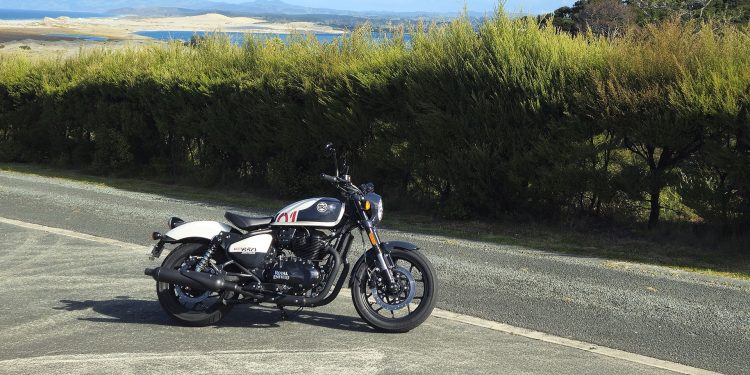2024 Royal Enfield Shotgun 650 Review
Words Peter Louisson | Images PL, Royal Enfield
This is the concept that RE fans wanted as a production model and the firm duly obliged with its first bobber.
Royal Enfield now has six models in its 650 twin line-up, the latest couple (Bear 650, Classic 650) added recently at the EICMA show. Earlier this year it launched a bobber, the Shotgun 650 you see pictured here. This is the first of its type for the brand. It borrows the frame, swingarm and engine from the Super Meteor 650 but the rest is new.
We reckon the Shotgun is the most successful design yet from the Indian powerhouse, at least with the single seat option, as this tester has. The dual seat isn’t quite so successful visually, as the rear guard is hidden. But it is easy enough to remove the pillion section which then liberates a handy luggage rack beneath.
Other differences between this and the Super Meteor? The USD Shotgun forks have 33mm less travel and different spring and damper rates. At the rear, the shocks have 20mm of extra travel. And that’s often a sore point for bobbers; ride quality sometimes takes a back seat for this type of motorcycle, with limited rear suspension travel.
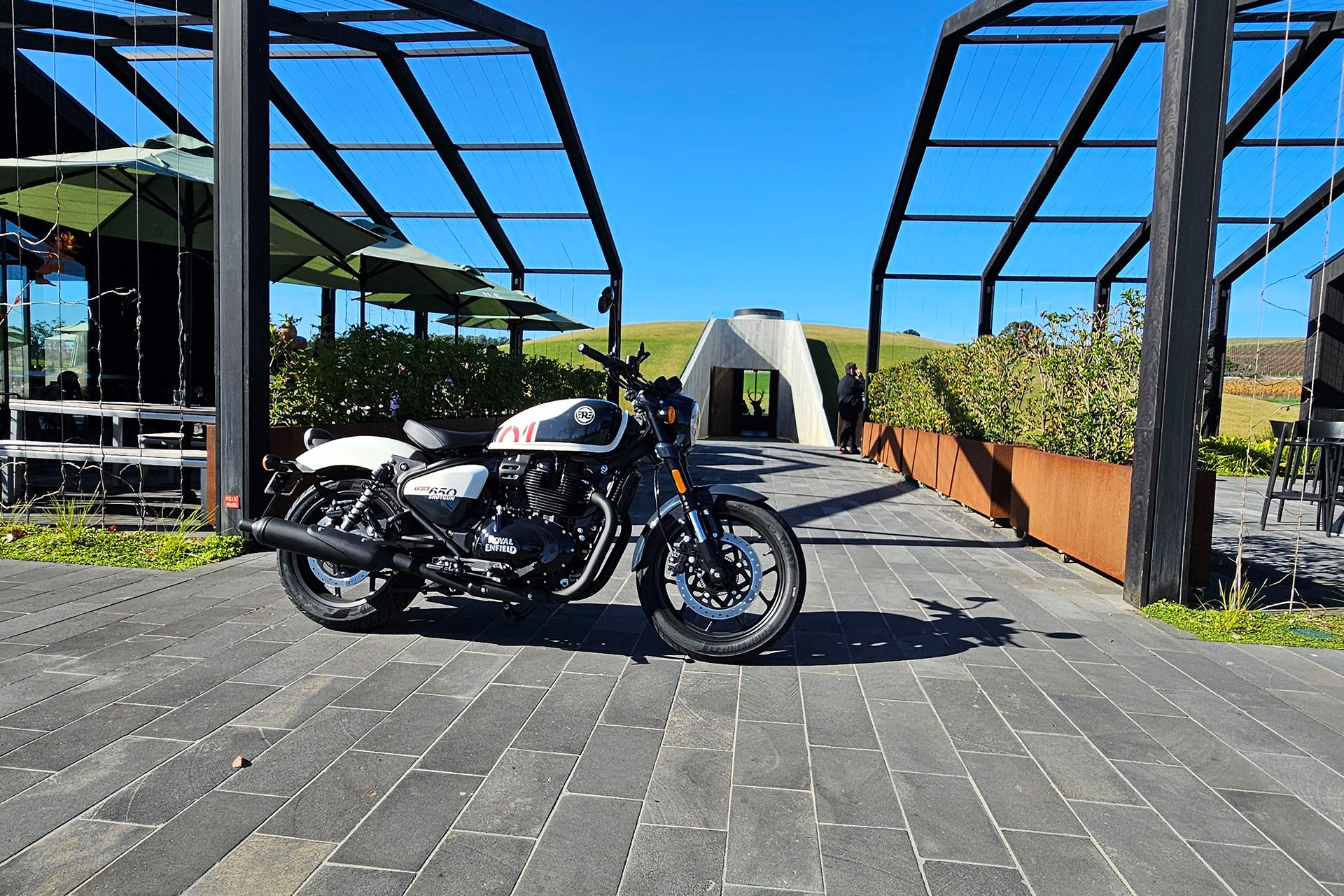
Shotgun has a steeper rake and a shorter wheelbase than the SM. Moreover, the front wheel diameter measures 18 inches and it’s a 17-inch unit at the back. That all makes it a little more agile than the cruiser, something we noted at the launch out of Melbourne earlier this year. It really does like to boogie on down, and has okay ground clearance and decent enough rubber to make the best use of its abilities. Getting into a groove you can get the pegs to touch down, though it takes a bit of conviction. Many bobbers have next to zip in the way of ground clearance so the Shotgun is much better in that regard.
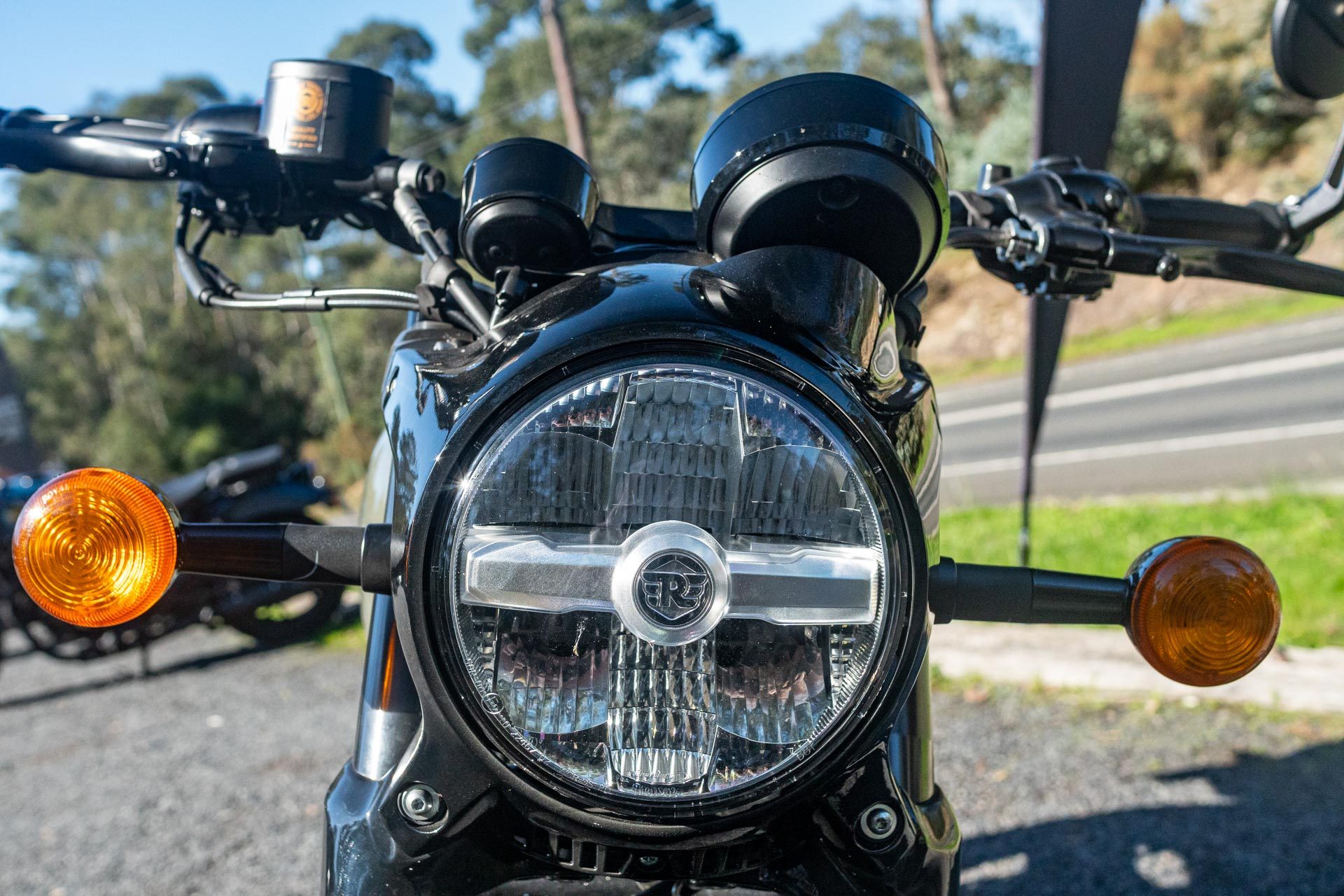
The fuel tank, mudguards and headlight enclosure are also new, while the engine and pipes are blacked out. This particular tester features the more expensive two-tone black and white colour scheme and it looks the smartest. Where the SM has plenty of (reflective) chrome highlights the focus here is blackout. There’s an army green colourway, along with grey (considered the one to buy if you plan on customisation) and a blue hue.
What’s it like then?
Fully fueled it weighs in at 239kg which is similar to the SM. There are no ride modes or TC, just ABS for the two-piston brakes at each end. You’d not really expect those on something costing $11,990 for the base model. Add $200 for blue or green, and $400 for this two-tone variant. Available accessories include cool bar-end mirrors, different rims and handlebars, skid plates, crash bars, and a wee double-bubble fly screen.
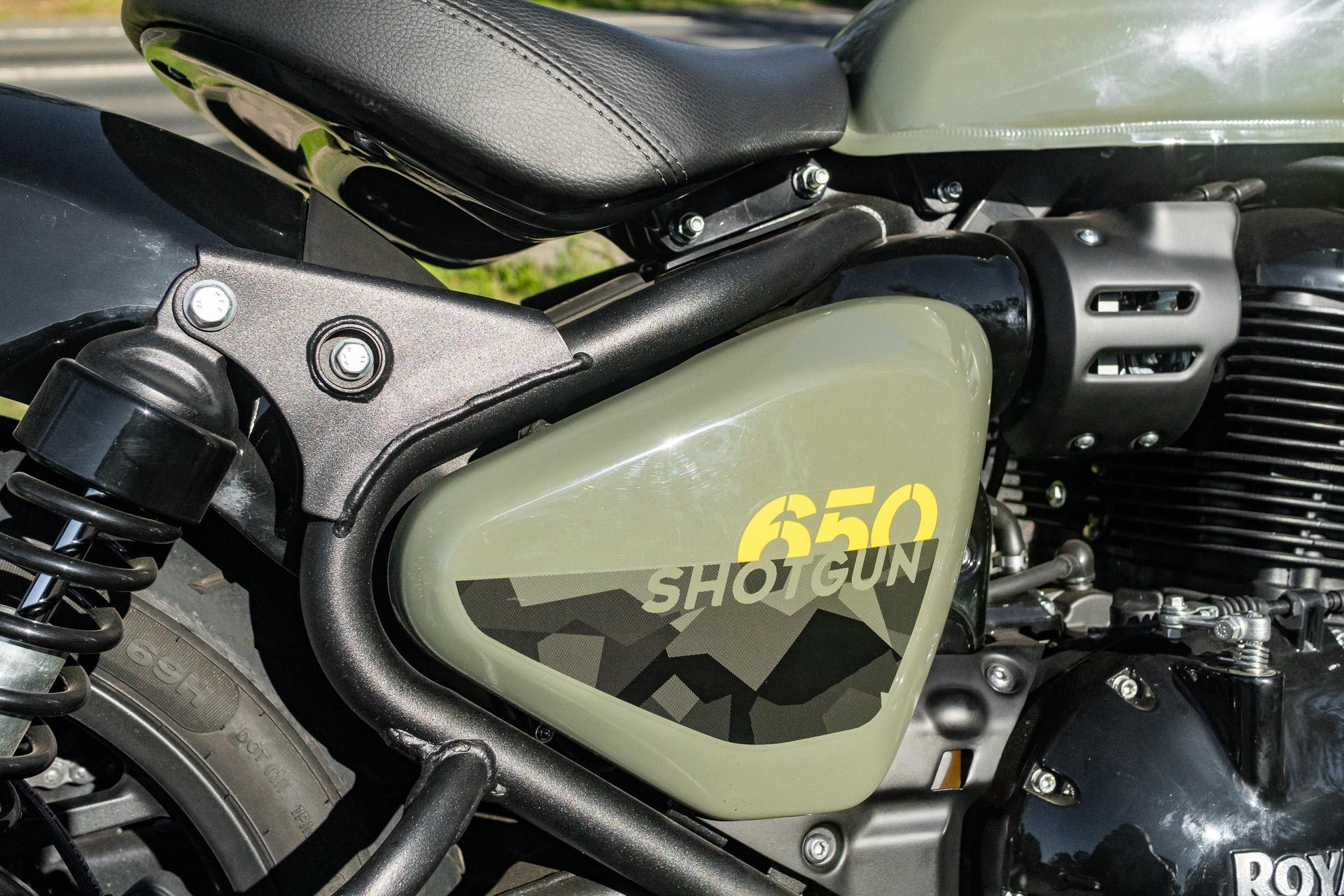
While the traditional RE frame loop remains, there’s a fresh LED headlamp design and surround. The lone instrument comprises an LCD panel and an analogue speedo. We’re not so keen on busy dual-speed readouts in mph and kph but presumably it keeps costs down. There’s no rev counter and instead alongside is the firm’s Tripper navigation pod. Handy if you set this up for touring which you could with luggage, a screen and perhaps auxiliary lights as accessories. A read-out style rev counter in the digital set-up would be nice. Handspan-adjustable levers are somewhat unexpected.
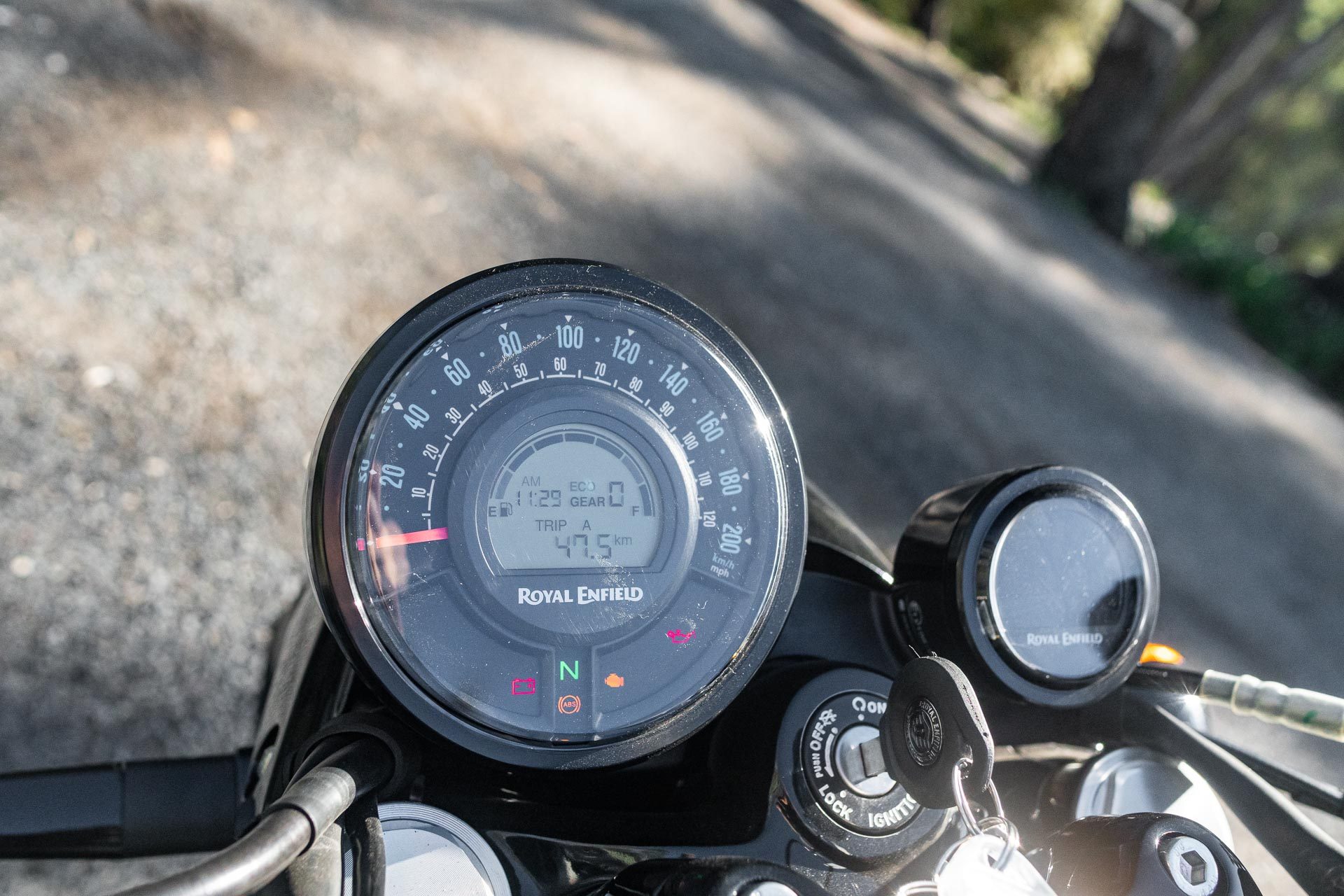
The SG feels is certainly sportier than the SM with its 18- and 17-inch (F/R) rims vs 16 and 19 for the Super Meteor. Suspension on both ends is by Showa and while there’s evidently 90mm of travel at the rear, quite generous for a Bobber, the boingers don’t quite have enough travel on our poorly upkept roads, at least at highway speeds. So it’s best to rise up a little if you anticipate a big hit, easy enough to do even with the pegs mounted only slightly forwards. Even with the rear suspension on its lowest setting, lumps and bumps are only partly diffused at 100 kays.
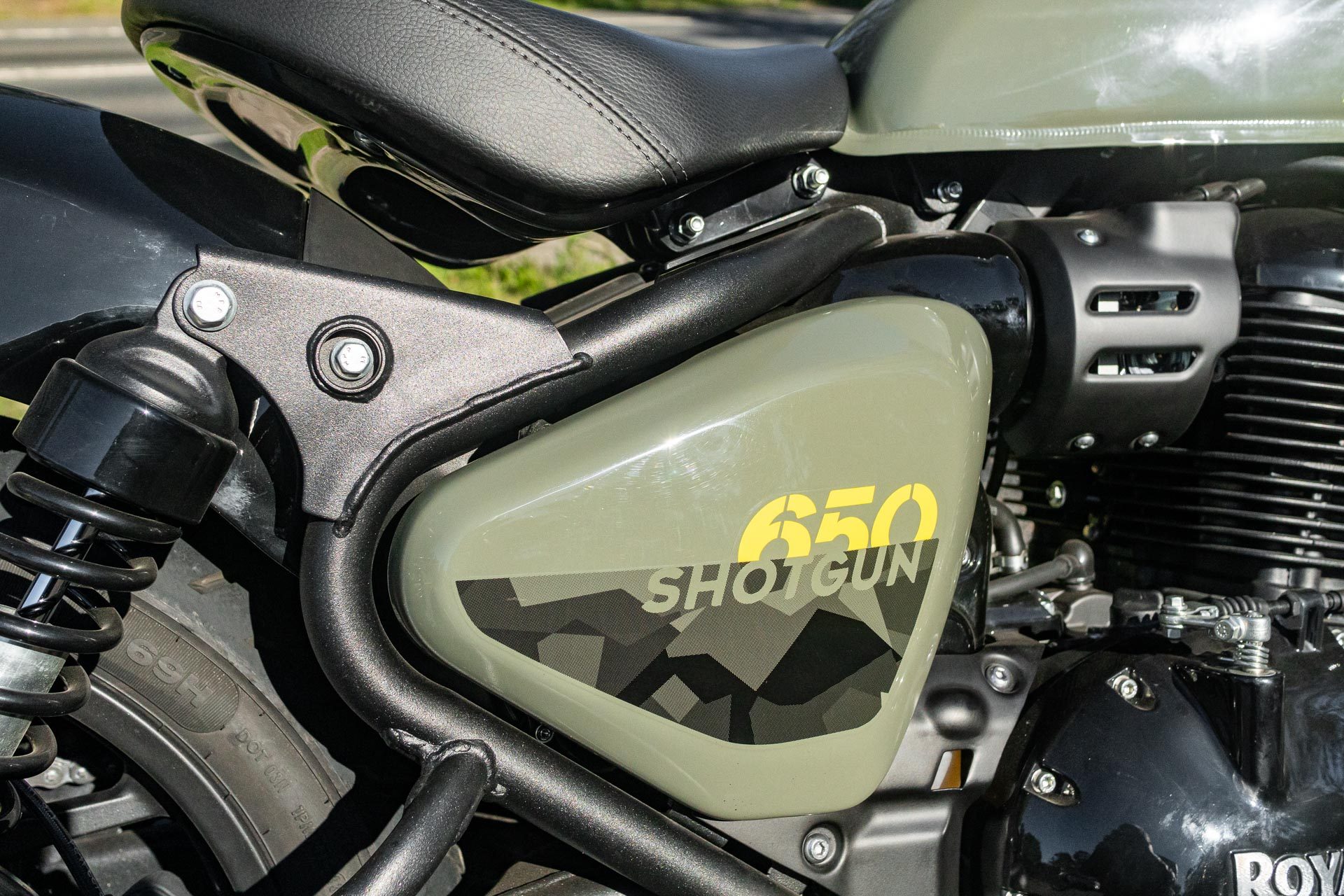
By contrast, in town, it feels great, almost cushy. The riding triangle is comfy on this and the single seat generous, allowing you to move around some.
LAMS legal with solid torque
The 650 parallel twin creates 35kW of power and 52Nm of torque, available at easy engine speeds. It will comfortably mooch round town in sixth gear, though fifth is better. And it sounds good too, if not especially loud. Blame noise regs.
A low first gear helps with acceleration and the gearbox is lightweight and fluid. The torque peak feels to arrive around the 100km/hk in top gear which is convenient. While it’s no rocket – it is a LAMS-legal machine – you notice this mainly during overtaking. Compared with the SM it isn’t quite as feisty, but at open road speeds it is relaxed, with almost nothing in the way of vibration.
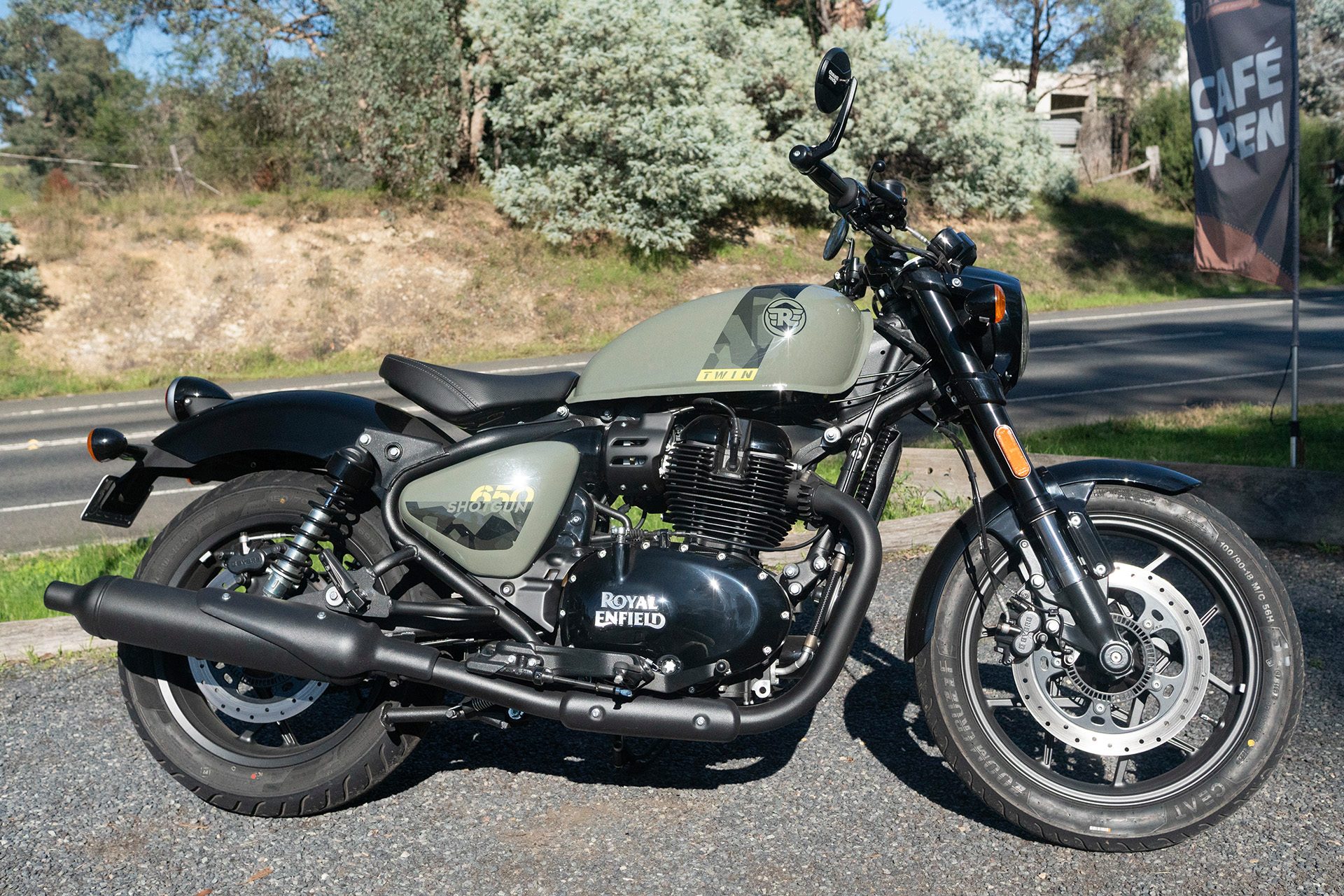
RE fits an axial-mount two-piston Bybre caliper that acts on a 320mm disc up front. It feels acceptable but by contrast the rear unit is awesome, a twin-piston caliper gripping a 300mm disc. Used together, this slows with real conviction, down in the 37m area for an emergency stop from 100. You’d be surprised how effective the rear is on its own, a good thing for learners.
The finish is improving on RE product too. Some years ago the paint looked pretty second hand after a year or so of use. This features lots of gloss finishes on the headlight surround, indicators, triple clamp, and engine covers which should last the distance better.
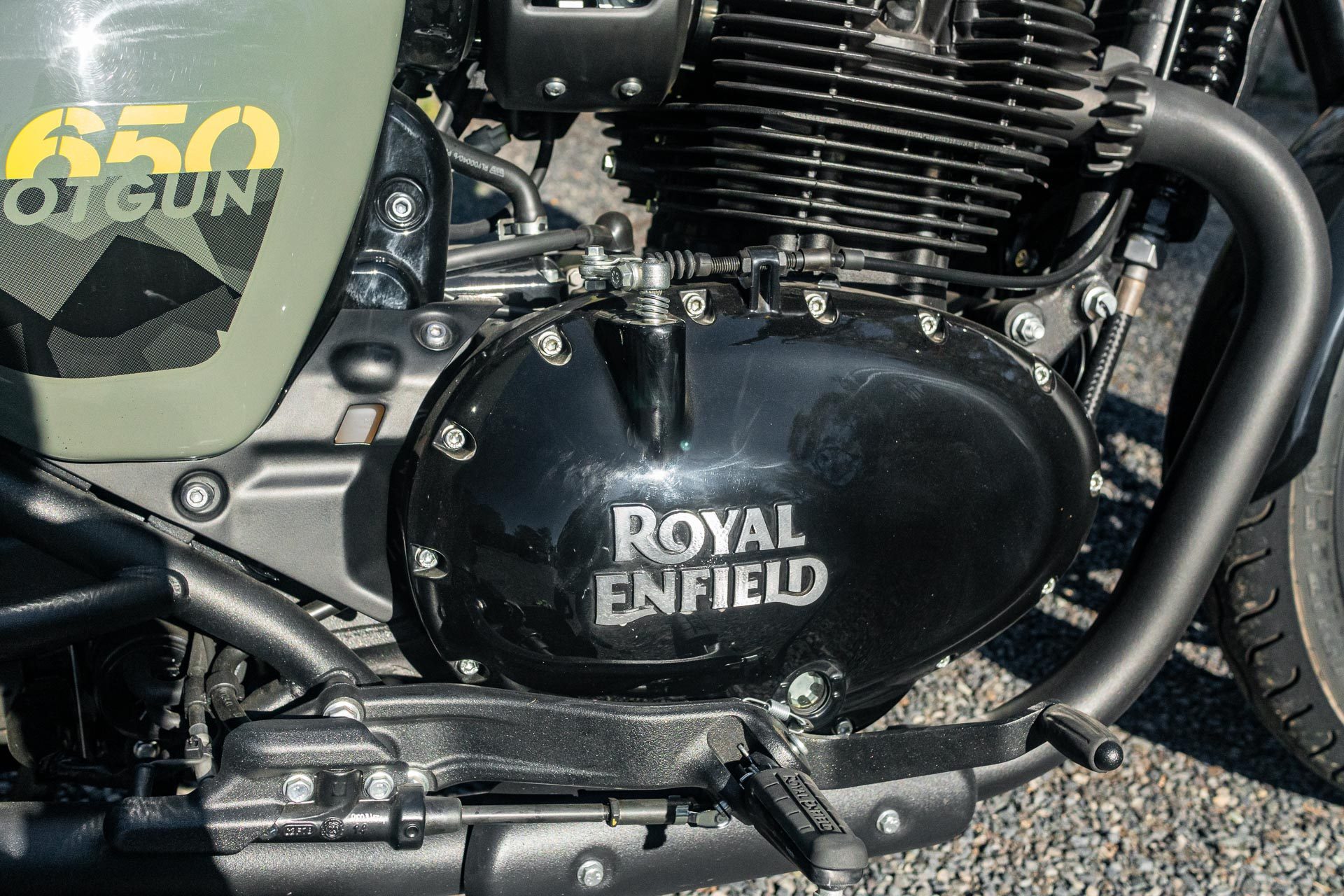
If you plan on using this mainly in the burbs, it’s really a pretty trick machine, with a neo-retro look that works exceedingly well. Not that it can’t venture far and wide happily either, but it’s better on smoother surfaces. Pricing is, as always with RE, hard to overlook!
If you’re into a bit of soft-roading action as well, check out the Bear 650, a scrambler. The Classic 650 is essentially just that, an old-school look for the 650 chassis.



